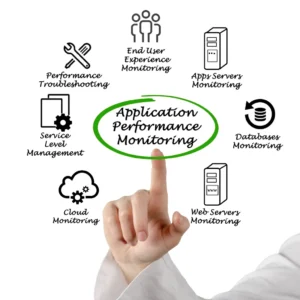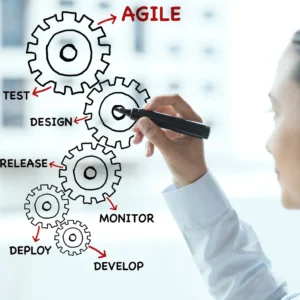
Streamline Your Operations: A 9-Step Guide for IPA Implementation
Discover a comprehensive step-by-step guide for successful IPA Implementation and streamline your operations.
This article provides actionable insights and practical strategies to automate and optimize your business processes, leading to improved efficiency, increased productivity, and a seamless digital transformation.
Follow these nine steps to implement automation effectively, from assessing process suitability to selecting the right automation tools, ensuring smooth integration, and monitoring performance.
Unleash the power of automation and unlock the potential for operational excellence in your organization.
Table of Contents

Arindam Roy
An Automation Consultant with 25+ years of IT Experience
Steps to Consider
Step 1: Assess Process Suitability for Automation
It’s essential to recognise which tasks are repetitive, follow a set of rules, and cannot be automated. Doing so lets you prioritise them and allocate the necessary time and resources.
These processes are ideal for automation, freeing up your employees’ time and allowing them to focus on more critical projects. Ultimately, this can lead to increased productivity and improved business outcomes. Assessing your processes’ suitability for automation can help you maximise your investment in IPA.
Step 2: Set Clear Objectives and Goals
You should identify the benefits and outcomes you hope to achieve through automation, such as improving processes, reducing errors, enhancing customer experience, or increasing productivity.
This will help you create an informed implementation strategy and monitor your progress towards meeting your goals. Get ready to see the positive impact of IPA in action!
Step 3: Select the Right Automation Tools
Make sure the tools you choose are compatible with your existing systems to save time, money, and headaches in the future.
To get the most out of your intelligent process automation (IPA) efforts, look for tools that offer advanced features like process modelling, integration capabilities, and analytics.
You’ll be well-equipped to implement your automation strategy with the right tools successfully.
Step 4: Secure Stakeholder Buy-In and Support
One of the most effective ways to attain the objective is by involving vital stakeholders such as top-level management, departmental heads, and staff members in outlining the advantages of automation.
Highlight how IPA can enhance productivity, boost employee morale, and lead to organisational success.
Handle any care concerns and ensure that everyone comprehends the positive effects IPA can have on their respective roles.
Step 5: Design and Map Automated Workflows
This will help you pinpoint improvement areas and establish clear automation steps. If you aim to create a comprehensive and easy-to-understand outline of your automated workflows, then flowcharts or process mapping tools are the way to go.
All parties involved will clearly understand the mechanical processes, eliminating confusion or uncertainty. Let’s get creative and design the workflows!
Step 6: Test and Validate Automation Workflows
This involves conducting comprehensive tests to verify that the automated processes function correctly, providing reliable and accurate results. It is also critical to compare the outputs with manual procedures to ensure consistency and dependability.
Taking immediate action is crucial if you encounter any problems or obstacles during testing. By doing so, we can enhance and refine our automation workflows to achieve even better results. Let’s collaborate to ensure a seamless process.
By adhering to these guidelines, organisations can ensure a successful and efficient implementation of IPA.
Step 7: Ensure Smooth Integration
Integrating technologies and APIs that enable efficient organisational automation ensures all systems work together seamlessly. With careful integration, you can maximise the benefits of BPA, streamline administrative processes, save time, and improve efficiency.
Failure to prioritise integration could result in ineffective implementation and missed opportunities for optimisation.
Step 8: Train and Empower Employees
Providing comprehensive training programs that introduce them to automation tools and workflows is highly recommended.
During these sessions, it’s essential to highlight the benefits of IPA, such as reducing manual efforts and increasing efficiency. At the same time, reassuring employees that automation is a helpful tool that enhances their abilities, not a threat to their jobs.
This approach will ensure a smooth transition to BPA and a more productive and efficient work environment.
Step 9: Monitor, Measure, and Continuously Improve
Setting KPIs that align with your goals ensures you’re on track. Pay close attention to efficiency, error rates, customer satisfaction, and overall productivity to determine how automation can benefit your business.
Analyse the data collected by your IPA system and use it to identify areas of improvement and optimisation. Continuously refine and iterate your automated processes to maximise their potential.
FAQ
What Is The Difference Between Intelligent Process Automation (IPA) And Traditional Automation?
Traditional automation typically involves complex integrations and custom development to automate processes. IPA, on the other hand, utilises IPA tools to interact with existing systems through the user interface, making it faster and more cost-effective to implement. IPA can also handle various applications without requiring significant changes to the underlying systems.
Will IPA Replace Human Workers?
IPA aims to automate repetitive tasks that follow specific rules, freeing human employees to concentrate on more important and valuable tasks. While IPA may replace certain job functions, it usually reassigns employees to higher-level roles that require critical thinking, creativity, and decision-making.
How Long Does It Take To Implement IPA?
The implementation time for IPA varies depending on the complexity of automated processes. Simple processes can be automated within a few weeks, while more complex operations may take several months. Our consultancy service will work closely with your organisation to provide a realistic timeline based on your requirements.
Can IPA Be Integrated With Existing IT Systems?
Yes, IPA can seamlessly integrate with existing IT systems and applications. It interacts with systems through the user interface, eliminating the need for extensive system integrations or modifications. IPA can work with various applications, including web-based, desktop, and legacy systems.
What Are The Cost Implications Of Implementing IPA?
Implementing IPA includes licensing fees for the IPA software, development and implementation costs, and ongoing maintenance and support expenses. However, the cost savings achieved through increased productivity, reduced errors, and improved efficiency often outweigh the initial investment. Our consultancy service can provide a detailed cost analysis and help you optimise your automation strategy to maximise ROI.
How Secure Is IPA?
Ensuring data protection is a top priority for IPA platforms, which offer a range of security features. We have implemented access controls, encryption, and secure credential management measures to protect sensitive information. Following established security best practices and employing appropriate security measures to safeguard IPA deployments is crucial.
Can IPA Be Used In Regulated Industries?
IPA software tools find practical application in highly regulated industries like healthcare, finance, and insurance. However, ensuring compliance with industry-specific regulations and data privacy requirements is crucial. Our consultancy service has experience working with regulated industries and can assist you in designing compliant automation solutions.
How Scalable Is IPA?
IPA bots are highly scalable, allowing organisations to automate a single process or scale up to automate multiple functions across different departments. IPA software can accommodate increased workloads by deploying additional IPA bots as needed, providing the flexibility to scale automation efforts according to business needs.
What Type Of Continued Assistance Is Necessary For IPA?
IPA bots or IPA tools require continuous monitoring, maintenance, and support for optimal performance. This includes managing software updates, addressing any issues or exceptions, and continuously identifying opportunities for business process improvement. Our consultancy service offers comprehensive support services to ensure the smooth operation of your IPA implementation and intelligent process automation.
Is IPA Suitable For Small Businesses?
IPA tools can benefit businesses of all sizes, including small businesses. It can help streamline operations, reduce costs, and improve productivity, allowing small businesses to compete more effectively in the market. Our consultancy service can tailor IPA software solutions to meet small business needs and budget constraints.
Conclusion
Unlock the full potential of your business with Intelligent Process Automation (IPA). Streamline processes, enhance efficiency, and thrive in a competitive business landscape. Our step-by-step guide for IPA Implementation can help you design automated workflows, integrate processes, and embrace continuous improvement. Say goodbye to inefficiencies and hello to productivity and seamless digital transformation with IPA.
Related Articles
- Choosing the Right Automation Tool in 7 Steps
- A 9-Step Guide to IPA Implementation: Energise Your Operations
- Navigating the Roadblocks of IPA – The Top 9 Challenges
- AI in Intelligent Process Automation – Unleash the Power of AI
- 9 IPA Examples in Small-Scale Industries
- Power of Intelligent Business Process Automation – Efficiency
- AI Business Process Management: Unleashing the Power
- Business Process Management with AI Integration
- AI for Reengineering Business Processes
- Hyperautomation: Redefining BPM with AI
- The Role of AI in Business Process Modelling
- AI-driven Customer Onboarding – Unleash the Power of AI
- Effective Process mapping in Intelligent Process Automation
- Intelligent Process Automation Adoption – The Best Strategy Guide
- TechInfra in IPA: A Comprehensive Guide
- Elevating Intelligent Automation with Continuous Improvement
- Comprehensive Approach to Cost-Benefit Analysis in IPA
- Vendor Selection in IPA – Comprehensive Guide
- Implementing Agile in Intelligent Process Automation (IPA)
- Scalability and Integration in Intelligent Process Automation
- Cognitive Automation in IPA: Innovating Ethical Efficiency
- Mastering Symphony: Bot Development in IPA Unveiled
- UI/UX Mastery in IPA: Elevating Automation Experiences
- Compliance and Security in IPA – A Guide Ensuring Trust
- Impact of Performance Monitoring and Analytics in IPA
- Driving Success: Data Management in IPA
- Crucial Role: Documentation in IPA Triumph
- Optimizing IPA – Continuous Improvement Strategies























